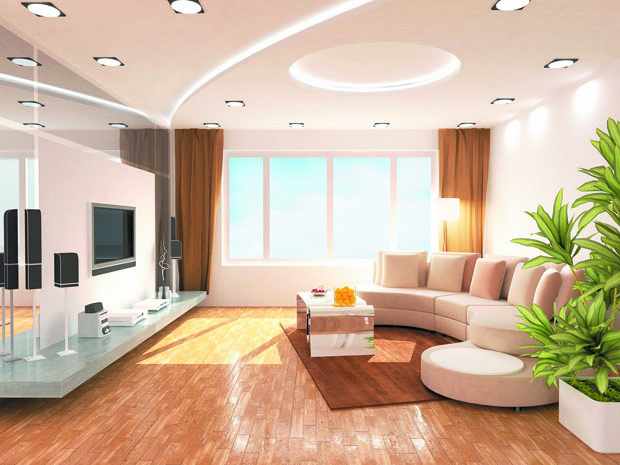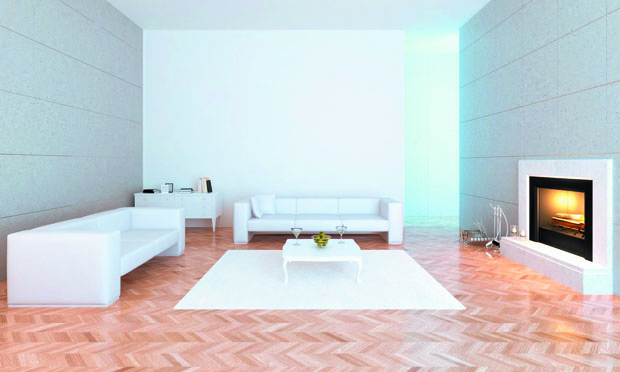The Bottom Line
It’s all about what’s curvy and what’s straight when it comes to the emotions an environment evokes. Taking cues from the philosophy of feng shui, see how your home decor lines up
QUESTION OF THE WEEK: I am in the process of going to various open houses as I want to get a feel for what I like before I engage a Realtor. I noticed that some homes immediately feel comfortable to me, while others feel uninviting. I also noticed they have nothing to do with color, size, style of decor, age, or location. I can’t figure this out. Could this be feng shui related?
The first thing that comes to mind is the “lines” of the homes you were visiting or the ratio of curves to straight lines in the space. This “straight” to “curved” line ratio makes a difference in the feel of an environment and determines how warm and welcoming your experience is. I can see what you experienced as both feng shui and psychologically related.
The Feng shui of curves
Feng shui is a philosophy based on nature, and one of its goals is to bring the essence of nature into the home. In nature, pretty much everything has a curve. Straight edges are man-made and considered “unnatural” in feng shui. Implementing curves in a home, mimicking that which you find in nature, introduces comfort and ease into the environment. So, yes, what you were experiencing can be explained by feng shui.
In feng shui, straight lines are considered more “masculine” and curves more “feminine,” yet neither is better than the other. Both are necessary to create an environment that provides a foundation of balance. Masculine energy is associated more with structure, hardness, strength, mental sharpness, linearity, formality and coolness, whereas feminine energy is considered warm, nurturing, loving, more informal, relaxing and emotional. When a space has a nice mix of both, we tend to feel good because the room speaks to the complementary opposites of what we need within us.
A linear room versus a curvy room
Imagine that a room you step into has predominantly straight lines. Can you see how it would give off the vibe of being more stiff and formal, harder to relax in? Think of how it would feel to kick back and relax in a predominantly linear living room with a rectangular table and a hard, boxy sofa. Even if your host said, “relax,” it would likely be hard to do so. On the other hand, if you were escorted into a room with more curves in the environment, a round table, a soft, curvy, fluffy sofa, and big bean bag chairs randomly scattered around, it would have an entirely different feel — much easier to relax in.

The Psychology of “curvilinear” lines
To further support this, a study done a few years back, where researchers measured the emotional responses to living rooms displaying “curvilinear” versus “rectilinear” lines of furniture, found that participants overwhelmingly associated the curvilinear rooms with pleasant emotions, such as peace, contentment, calmness, and a sense of relaxation, while rectilinear settings aroused stressful, annoying, and angry emotional states.
Moreover, the responses reflected a desire to approach the settings with curvilinear rather than rectilinear furniture. Participants also showed a marked desire to engage with others and spend more time in the curvilinear spaces. The conclusion was that settings with curvilinear forms promote feelings of happiness, calmness, and relaxation, which is probably what you experienced in the homes where you felt most comfortable.
More about lines
As I just shared, the lines found in a room can have a strong psychological effect, and a change in lines can completely change the feel, mood, or ambiance. Here are a few additional insights into lines:
The straight
• Horizontal lines suggest a harmonious relationship with the Earth and give a sense of tranquility. Distinct horizontal lines can visually expand a space, making it look wider or longer than it is, but too many horizontal lines can create boredom.
• Vertical lines make interiors seem higher, lifting the eye, mind and spirit, conveying strength and stability, and inspiring awe. Churches historically incorporate vertically dominating lines to lift your eyes and attention heavenward. Vertical lines work well for formal dining rooms, living areas and entry-ways, but too many vertical lines can create feelings of uneasiness or insecurity.

The angular
• Diagonal lines in the environment, created by angling furniture or using them in design structures, suggest movement, energy and action, but too many can also be over-stimulating and tiresome.
The curved
• Curved lines provide relief, ease, softness and balance, giving an elegant, warm and comforting quality to the environment. Curved lines bring grace and relaxation, yet too many curved lines might be viewed as too feminine, creating a space in which it is difficult to focus and fully engage the mind.
So, the next time you go into a room or house, notice the lines. You’ll see that the more “curvy” the lines, the more relaxed and welcoming the space, and the more “straight” the lines, the more cool and formal.
Alice Inoue is the founder and Chief Happiness Officer at Happiness U, a friendly and warm educational establishment at Gentry Pacific Center on Nimitz Highway. At Happiness U, one can learn how to be happy, a subject you won’t find in a traditional school. Happiness U offers classes such as feng shui 101, clutter clearing plan 101, positive mindset 101, happiness 101 and more. www.YourHappinessU.com